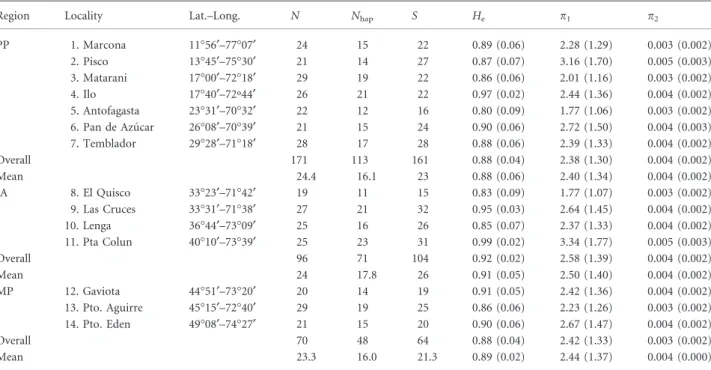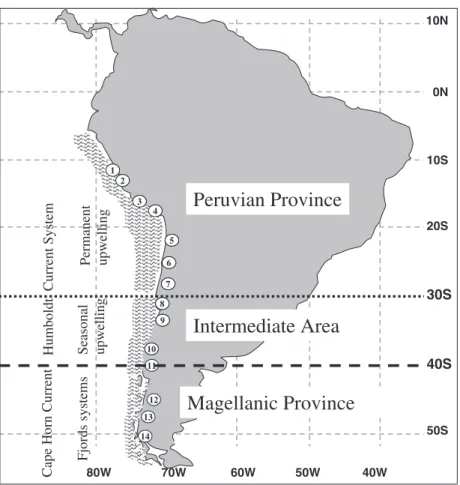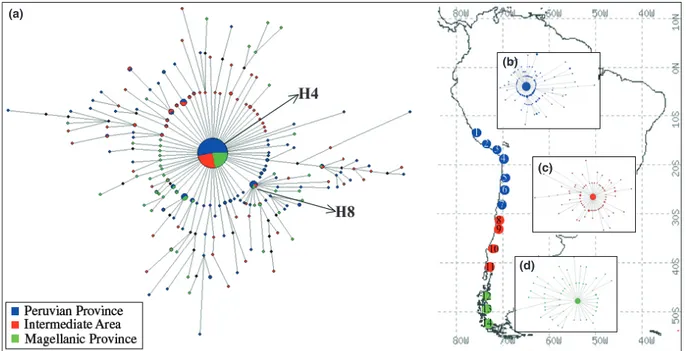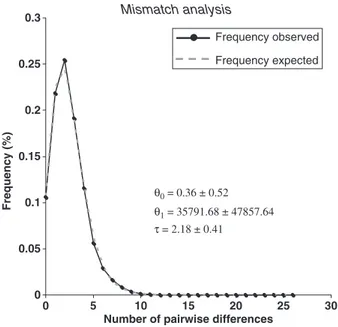A phylogeographical analysis across three biogeographical provinces of the south eastern Pacific: the case of the marine gastropod Concholepas concholepas
Texto completo
Figure




Documento similar
In the preparation of this report, the Venice Commission has relied on the comments of its rapporteurs; its recently adopted Report on Respect for Democracy, Human Rights and the Rule
It is generally believed the recitation of the seven or the ten reciters of the first, second and third century of Islam are valid and the Muslims are allowed to adopt either of
From the phenomenology associated with contexts (C.1), for the statement of task T 1.1 , the future teachers use their knowledge of situations of the personal
Our results here also indicate that the orders of integration are higher than 1 but smaller than 2 and thus, the standard approach of taking first differences does not lead to
The Dwellers in the Garden of Allah 109... The Dwellers in the Garden of Allah
Diversity patterns of Notosuchia across Gondwana As noted above, although close to 75% of the known no- tosuchian diversity is found in South America (Fig. 2), there is a large
In a similar light to Chapter 1, Chapter 5 begins by highlighting the shortcomings of mainstream accounts concerning the origins and development of Catalan nationalism, and
Díaz Soto has raised the point about banning religious garb in the ―public space.‖ He states, ―for example, in most Spanish public Universities, there is a Catholic chapel